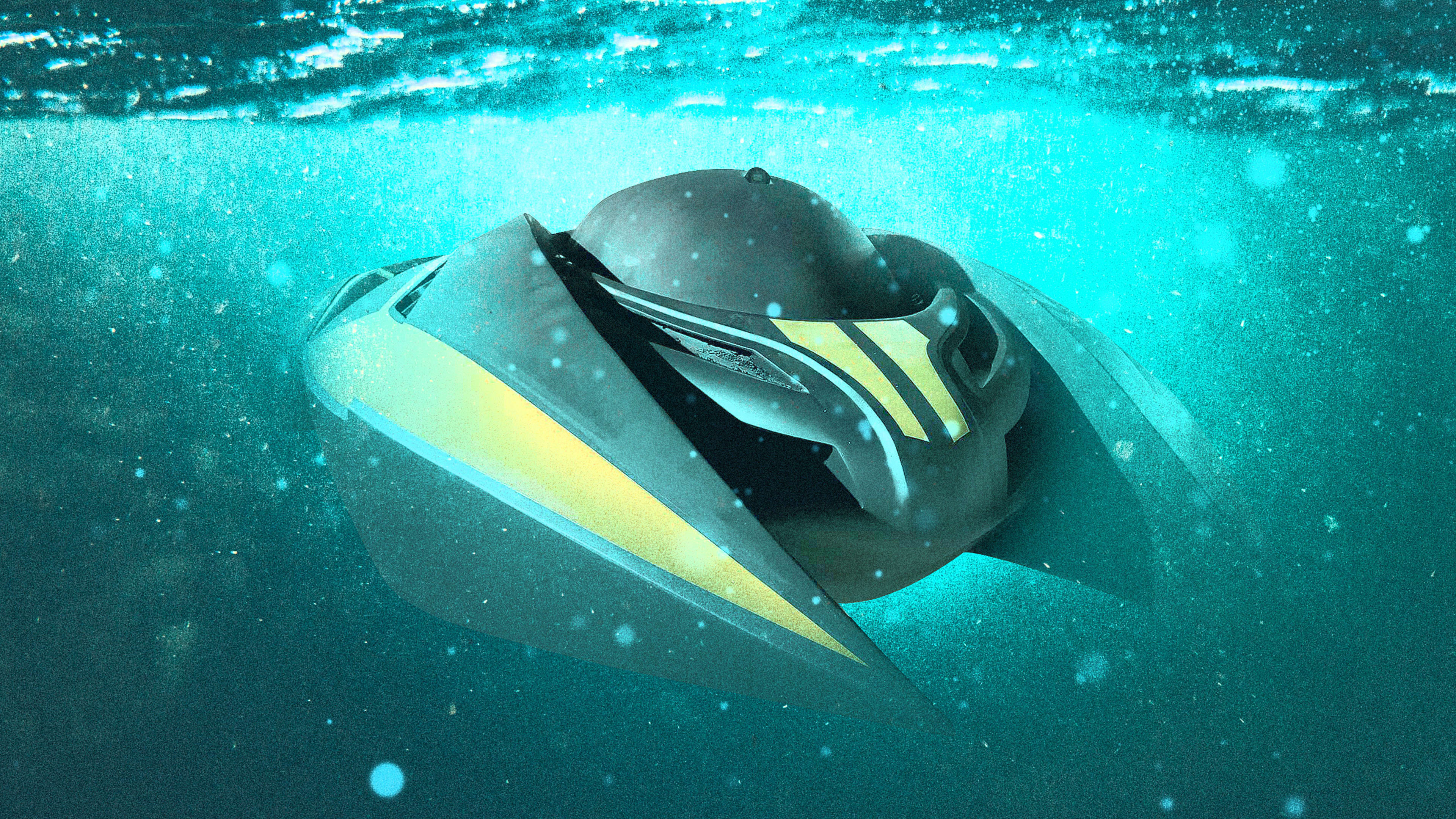In the Arabian Desert—somewhere past the end of Dubai—a small band of misfits claim to have built the submarine of the future in the middle of an ocean of sand. Hanging from a heavy industrial crane inside an industrial warehouse, the black silhouette of the machine feels biological and menacing, almost alive as its creators put in the last touches before its virgin voyage.
Its name is Kronos. And according to its chief designer, Ukrainian engineer Alexander Kuznetsov, founder of Highland Systems, it may change naval warfare forever.

If traditional large submarines are the slow-moving bombers of the sea, Kronos is a stealth jet fighter, capable of maneuvering at fast speeds, turning on a dime, and sneaking behind big enemy ships to disable them with torpedoes and even sink them with magnetic mines. Its design is intended to have it lie on the ocean seabed, listening to its sensors, like a predator patiently waiting for its prey.
These are lofty claims, but if Kronos performs as Kuznetsov and his team expect, it has a chance of disrupting war at sea the same way drones have in the air and a new generation of easy-to-use, hit-and-run weapons have on land. As Matthew Sweeney—a commander in the U.S. Navy and professor at the U.S. Naval War College in Newport, Rhode Island—tells me in a video interview, everything Highland Systems proposes is feasible on paper. Ukraine, however, is at war now.
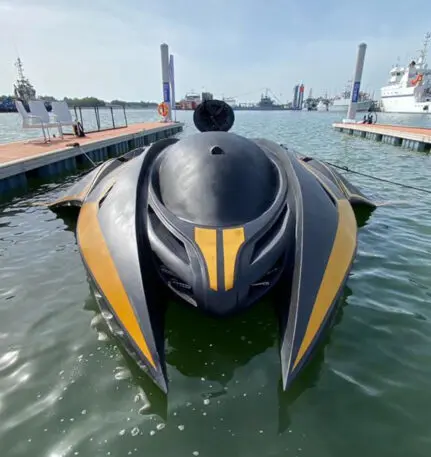
A radical redesign of the old submarine
Submarine design has remained ostensibly the same since the end of the 19th century, when the Spaniard Isaac Peral invented the first fully capable military submarine. From the diesel U-boats that terrorized Allied convoys during World War II, to the modern nuclear-powered attack submarines that can unleash a storm of atomic missiles over the planet at the turn of a key, they are all tubes, powered by hybrid diesel-electrical engines or nuclear reactors.
Envisioned to operate in deep waters, current military submarines can patrol the oceans for months at a time. They are powerful and deadly, but huge, and they maneuver quite slowly. One example: An operation like a crash dive—which means submerging from the surface as fast as possible to avoid attack—took a World War II-era submarine about 30 seconds. A modern, Ohio-class nuclear sub takes up to five minutes to fully submerge.
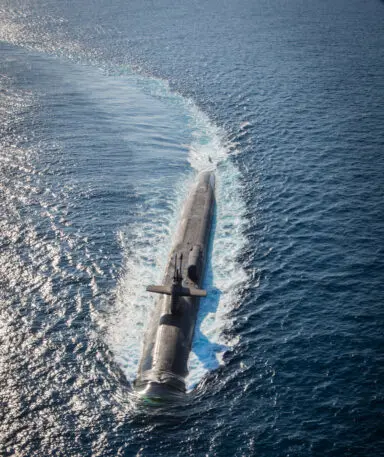
Their size comes with a host of other problems. Submarines are laborious to turn. The average submarine going at full speed has a turning radius that ranges from 750 to 1,500 feet. And they need a considerable amount of water to operate at all. Even smaller vessels—like anti-submarine hunter-killers, designated as SSK—have a minimum operating depth of 650 feet, according to the U.S. Naval Institute, because they need to have space under their keel.
Kronos is designed to be the performance opposite of a traditional submarine. Its intentionally small and stealthy design is meant to enable it to creep close to shore, or enemy vessels, firing pinpoint torpedos and dropping mines to cause devastation more like a drone than a U-boat. Instead of needing a crew of 100 to operate like submarines of today, Kronos can be handled by a single brave pilot and carry up to eight special operations commandos.
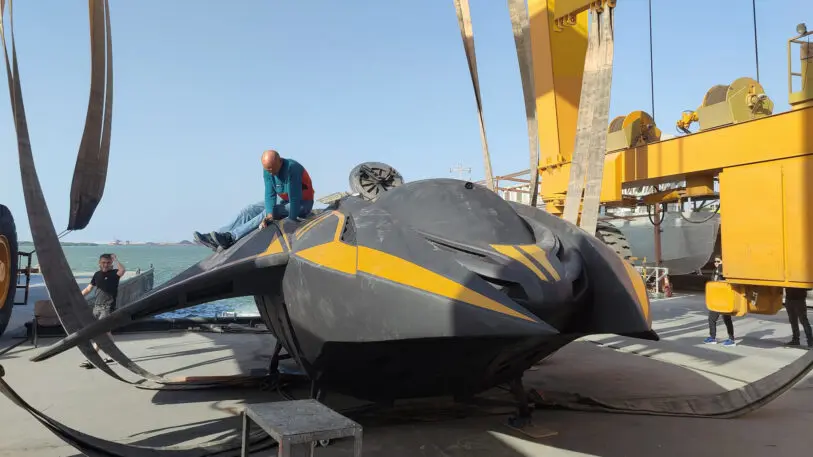
From billionaire toy to hunter-killer vessel
Kuznetsov—no relation to Ukrainian Russian actor Aleksandr Kuznetzov—was born in Ukraine but moved to Russia at age 6 to study, all the way from grade school to the completion of his doctorate in engineering. He returned to his home country to assemble a team to try to build the first-ever electric amphibious armored vehicle. It wasn’t possible, he says, because the bureaucracy in Ukraine was too great, requiring multiple permits to buy crucial components even before the war started. In order to acquire necessary tools and parts, the team moved to the United Arab Emirates, “where you can get anything you want” as long as you have the money to buy it, he says. They quickly found a local partner—armored vehicles maker Streit Group—and finally built their peculiar vehicle.
Soon after, the team decided to build a new type of personal submarine for work and leisure. In Kuznetsov’s mind, this vessel would have two versions: One model would carry workers to service underwater infrastructure, like communication cables or oil rigs. The other would be a luxury vehicle made for the eccentrically rich as the perfect accessory to their megayachts.
It seemed like a fun and lucrative plan . . . until Vladimir Putin invaded Ukraine and started a gruesome, illegal war. That’s when Kuznetsov and his team—like other engineers and companies in his country—decided to pivot to defend their homeland. Their new mission: redesign Kronos to fight against the Russian navy in the highly contested Black Sea.
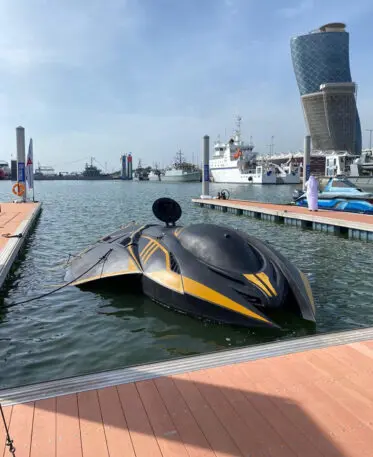
That meant Kronos needed to be adapted for military operations, with new capabilities that include running sonar, deploying magnetic mines, controlling cable-guided minidrones, and, of course, launching torpedoes. Its friendly design quickly evolved into a war machine through 36 iterations that were first tested with computer simulations and physical models of increasing sizes, both in wind tunnels and large swimming pools.
The 37th prototype was the breakthrough that you can see in the photos above, which finally got the team to the specifications they initially envisioned. From the outside, Kronos looks like a long animal skull that smoothly morphs into a dorsal spine, developing into a long tail as it fuses with the two wings. These two symmetric flanks transition into long wings on the starboard and port sides, each equipped with ailerons. Like on an airplane, these control surfaces change the shape of the wing, allowing the vehicle to turn on a dime. It’s not a coincidence that the resulting shape is reminiscent of a manta ray, one of the fastest and most efficient animals underwater.

The cockpit doesn’t have any windows. Instead, its pilot uses “digital glass” flat screens connected to external cameras and thermal sensors that give a 360-degree view of the submarine’s surroundings.
This aerodynamic profile increases the vessel’s speed. Its strange bow shape, the engineers say, was the most difficult part to calculate. They wanted it to be able to navigate not just underwater but also on the surface, with waves up to 16 feet high. Early versions of Kronos skipped on the water, making it impossible to glide on the surface at high speed unless the sea was calm. This was a major hurdle, but Highland Systems claims it can now cut through waves towering up to 19 feet tall.
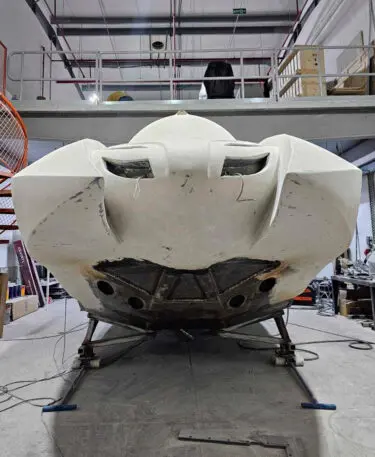
The final design looks completely alien. Without any context, it can pass as a UFO retrieved from a crash site or the set of a Marvel blockbuster. But this vehicle doesn’t look like an interstellar craft used by the Guardians of the Galaxy just for kicks. According to its designers, Kronos’s manta ray shape results in a stealthier and much more agile vehicle than the classic cigar-shaped underwater beasts that have roamed the seas for more than half a century.
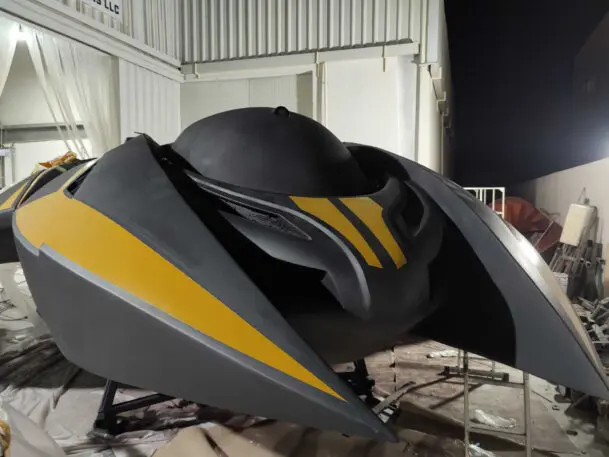
A new strategy of naval warfare
Highland Systems says that Kronos’s shape, electric engine, and sonar-absorbing coating—a stealthy finish developed in-house—make it the perfect vessel for hit-and-run and sabotage missions.
Kronos is built to patrol waters as shallow as 50 feet, all the way down to 820 feet, with the ability to dive faster than a standard submarine. Kronos can turn 180 degrees “instantly” at full speed—a world’s first, its designers claim. This ability, if true, could prove crucial for underwater warfare: “If someone shoots a torpedo at us, Kronos can avoid it because of this sheer maneuverability and small size,” a Highland Systems spokesperson says.
Its speed also helps. At 27 knots (31 mph), Kronos surpasses the published top speed of a Los Angeles-class nuclear attack submarine, which is 20 knots (23 mph), and almost matches its classified top speed, which is estimated to range from 30 to 33 knots (34.5 to 38 mph). On the surface, their speed is even more impressive—43.2 knots (49.7 mph) versus a maximum speed of about 30 knots for a typical military ship, like the ultra-modern destroyer USS Zumwalt, which reaches 32 knots.
In a hit-and-run mission, Kronos would approach an enemy vessel to disable it, not to sink it. Torpedoes like the Leonardo are not powerful enough to sink a ship in the same way a traditional large torpedo can. As Sweeney of the Naval War College explains to me, you need a lot of explosives to sink a ship. “We don’t actually hit the target with a [regular torpedo],” he says. “It goes underneath the ship, blows up a big bubble that lifts it up, and that force cracks it in half.” Kronos’s torpedoes can’t do this but they can do enough damage to disable any ship approaching from its wake and firing at its propellers, the company rep tells me.
After firing the torpedo, Kronos would either do a 180-degree turn and retreat, or sink straight to the seabed, lying down to avoid detection. Sweeney points out that this would be difficult to do, but it’s theoretically possible. “When you’re in a ship’s wake like that, it’s hard for a torpedo to home in on its target because of all the noise,” he says. “But it can be done. It’s just harder. It’s definitely feasible to do an attack that way. So it’d be . . . interesting to see them doing it.”
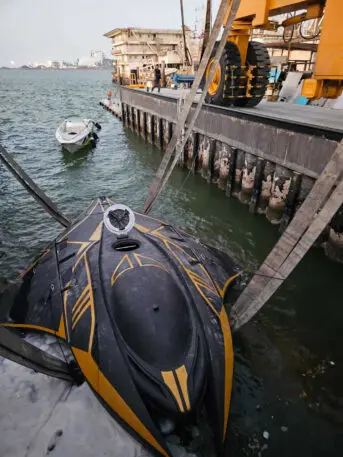
Another type of hit-and-run mission could be done with magnetic mines. Here, Kronos would sneak next to the belly of an enemy ship to attach and then detonate the mines from a safe distance. This would be impossible to do with a ship moving at full speed, Sweeney notes, but a slow-moving vessel or a moored ship would be vulnerable to this kind of attack.
Finally, Kronos introduces the possibility of sabotage. The vessel can stealthily approach ships at port or anchored in enemy waters to disable or sink them with explosives in hit-and-run missions. The other approach would be carrying special operations commandos to infiltrate enemy territory.
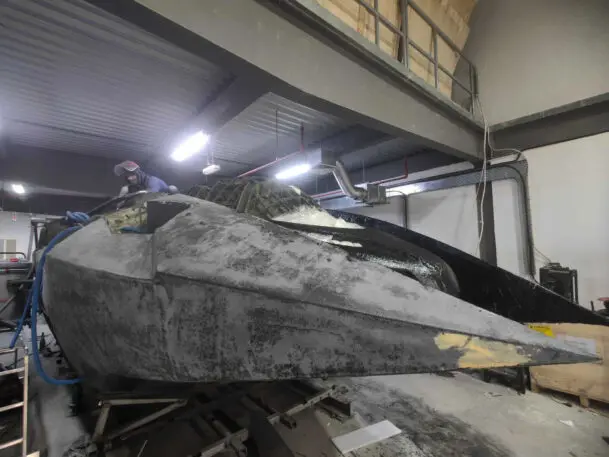
The race to develop a stealth submarine
Sweeney is a career submariner who served his first 10 years in the Navy as an enlisted nuclear-trained machinist mate. Throughout his career he has been deployed on nuclear-powered submarines. He’s not the only one who has been thinking about a new style of U.S. submarine, but his team claims to have beaten others to the punch by working around bureaucracy.
The Pentagon’s advanced research arm—the Defense Advanced Research Projects Agency, or DARPA—has been working on a similar project to Kronos for a couple of years. It aims to build a highly maneuverable, high-endurance submarine drone that can glide underwater completely autonomously. Just like the vessel developed by an upstart Ukrainian company based in the UAE, the DARPA vessel is also inspired by the shape of a manta ray, which is believed to be one of the most efficient biological designs for underwater operation.
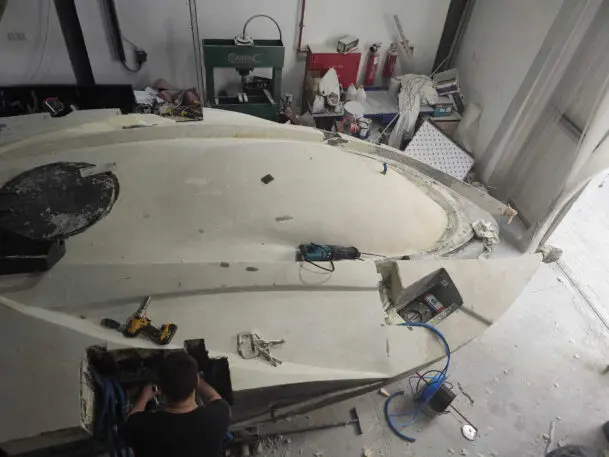
But while DARPA is still in the first design stages, Kronos’s engineers have already built 37 prototypes following the Silicon Valley playbook: design, build, test—and don’t be afraid if it blows up. This rapid prototyping approach led SpaceX to successfully build its rocket empire, and Highland Systems is betting that it will allow Kronos to beat the slow industrial military behemoth.
The company unveiled the first functional, full-scale Kronos prototype at the IDEX-2023 international defense fair in Abu Dhabi in March. “When military people see Kronos, they can’t believe that it exists,” a company rep who prefers to remain unnamed for safety concerns told me over video chat. “We had some current commanders and former commanders of submarine forces from NATO countries inspecting it in absolute disbelief.”
Military personnel ask how it is possible that no big company in the industry has built something like Kronos yet. The answer, the rep says, is always the same: “They are big companies. To approve anything you have to go to three or five bosses. Here we don’t have five bosses. We are just a group of passionate guys working in the middle of the desert. Here you just come, evaluate, and decide, ‘Yes, this is wrong, let’s change it.’ That’s it. It takes us five minutes. It’s the startup mentality.”
The designers who handcrafted Kronos are definitely not material for the Lockheed Martins and Raytheons of the old military complex. Led by the forty-something-year-old Kuznetsov, Highland Systems is formed by just seven engineers, all with experience working in Ukraine in different defense-related jobs. “We have a team specialist who came from Moldova. One guy even Uzbekistan. But all of them are special, they are not your typical engineers,” the company rep tells me. They all know how to weld, for example, and each have different areas of expertise.
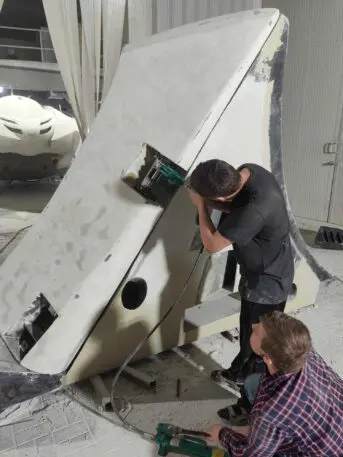
Preparing for an evolution of war
What makes Kronos’s design so interesting in today’s military scenario is that it fits the principles of the war of the future that started to develop since Russia’s full-scale invasion of Ukraine in 2022. As demonstrated by what’s happening there, the war of the future will be one of attrition.
Rather than spending billions on a few extremely complicated vehicles, Kyiv has demonstrated that you can be nimble and attack with many inexpensive weapons like the Bayraktar TB2—the Turkish drone that is the nightmare of Russian troops—and cheap loitering munitions that fly over patches of terrain looking for targets to attack kamikaze style. The U.S., China, and other countries are starting to think that massive swarms of disposable drones coordinated with tactical artificial intelligence can overwhelm the enemy defenses and inflict greater damage than localized attacks. In fact, there are simulations that show that these inexpensive weapons will be key to stopping China from invading Taiwan.
As Sweeney points out, Kronos fits perfectly into this new world: “Everyone is trying to see what can be done with smaller, less-expensive vehicles across all domains—air, land, and sea.”
While Highland Systems wouldn’t share its final numbers, it assures me that the price tag of its vessel will be a ridiculous fraction of the cost of an SSK attack submarine, which goes for about $450 million without maintenance and operational expenses. The result is that you can build a large fleet of Kronos-like subs and cover their operational costs for years for the price of a single SSK. (Fun fact: American nuclear submarines start at $3 billion and take seven years to build).
Kuznetsov’s company boldly claims that half a dozen Kronos can control the Black Sea. Sweeney is a bit more conservative in his estimates. He believes that if you had, say, 10 of these subs along a coastline, they may work effectively against anything that crosses into a country’s territorial waters.
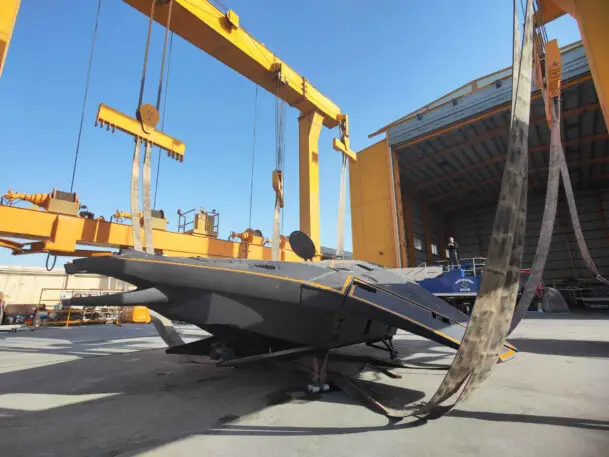
Mission (im)possible?
Even if Highland Systems’ claims prove out, it doesn’t mean that large submarines are going away anytime soon, the same way fighter jets, bombers, tanks, and deadly artillery for dummies are going to stay around. But the mere existence of Kronos, if it finally enters service in time to participate in the war in Ukraine, will be highly disruptive. Even without it, the Russian navy already fears going anywhere near the Ukrainian coast, keeping its Black Sea ship mostly locked in the Crimean port of Sevastopol, where it has suffered massive attacks by home-brewed marine drones a few times, the latest just this past week.
It may seem like a Mission Impossible to many. In our conversation, Sweeney seemed quite amused and intrigued by the idea. He certainly saw how a Kronos-like vessel could influence future naval warfare. Obviously, Kuznetsov and his team are convinced that they will succeed, just as companies like the Turkish Baykar did with its low-cost drones and SpaceX did with its low-cost reusable rockets.
“Probably within five, seven years, most submarines will have the same shape,” he tells me. “As soon as they understand its advantages, things will change.”
Recognize your brand’s excellence by applying to this year’s Brands That Matter Awards before the early-rate deadline, May 3.
